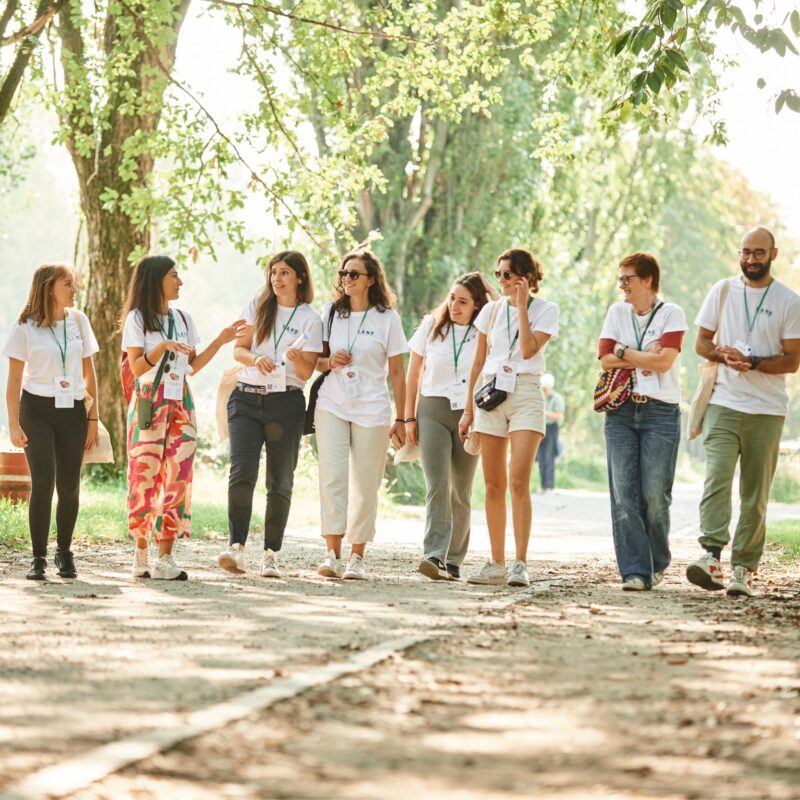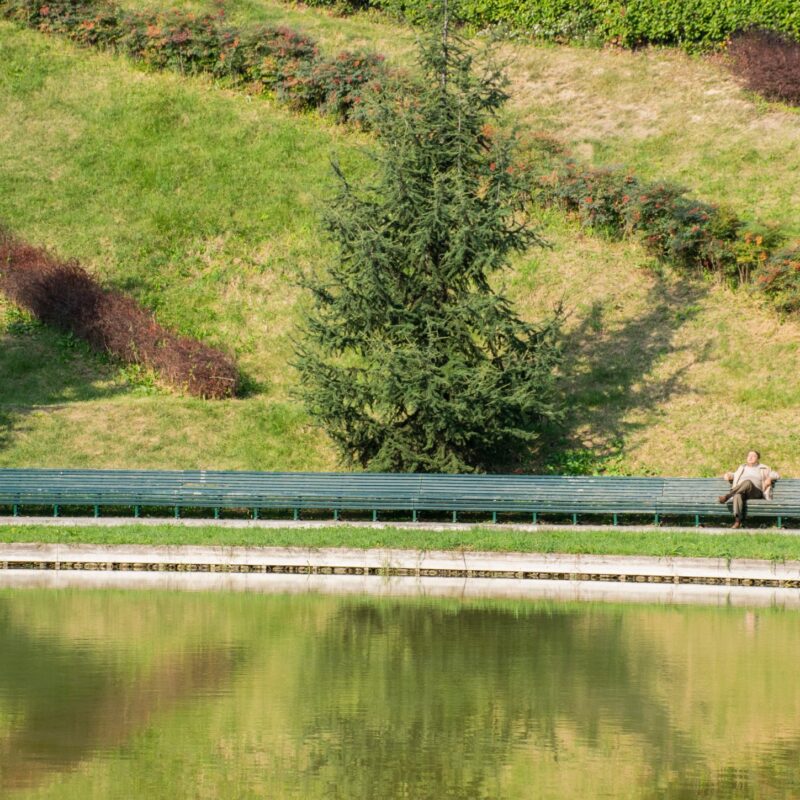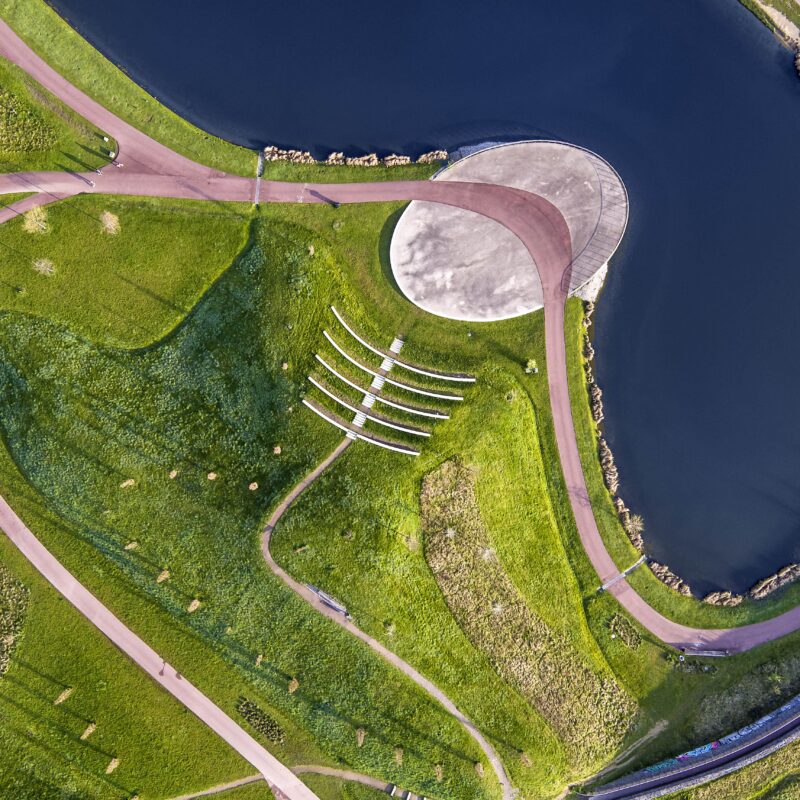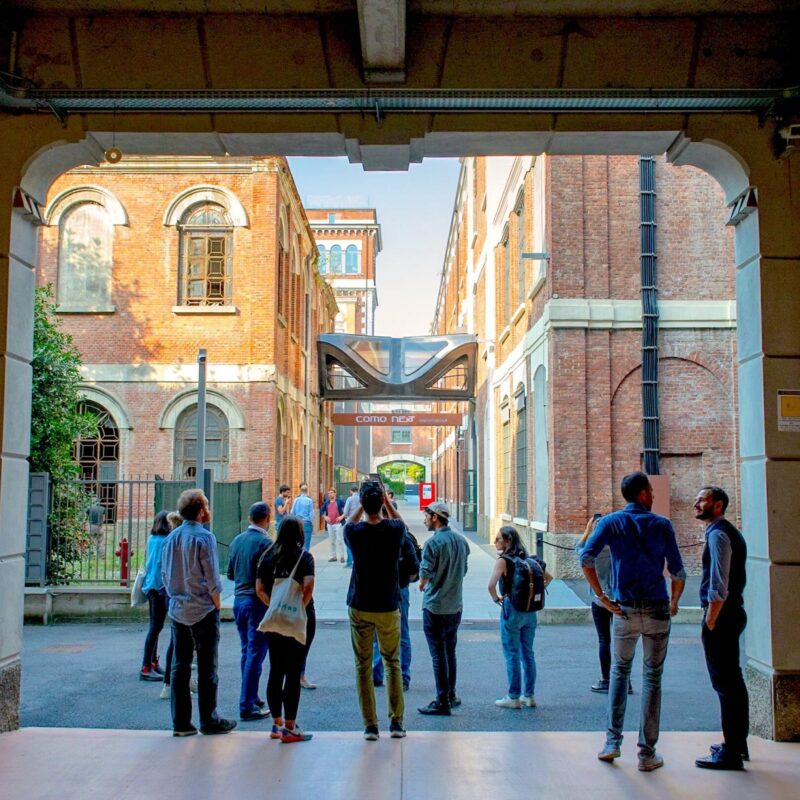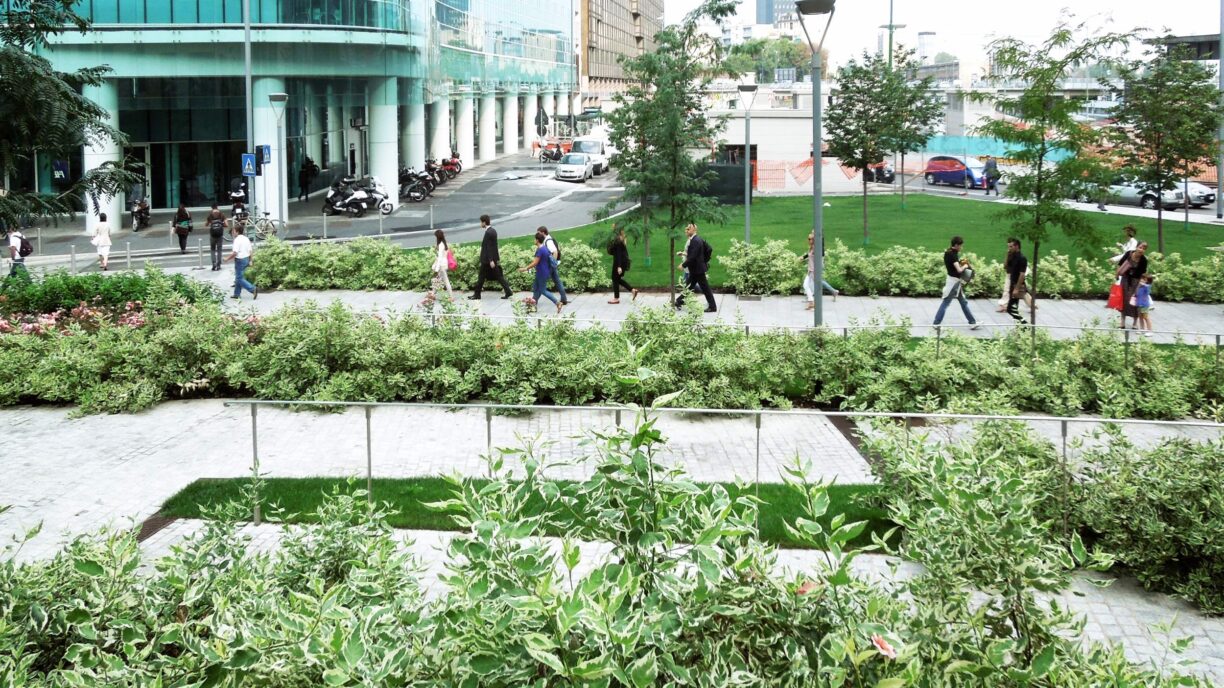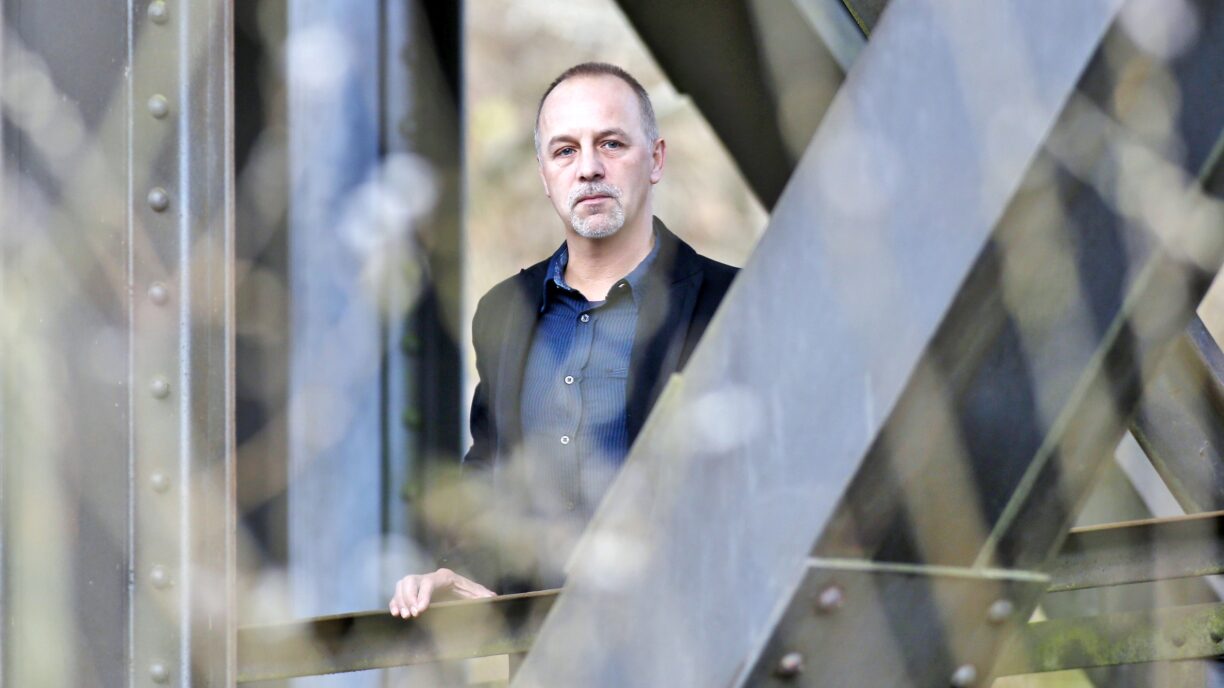
Plants don't lie
The new centrality of landscape.
Topics, theories, individual predispositions – a current self-survey by LAND’s directors in spring 2023 moderated by Prof. Alexander Gutzmer, author and architectural publicist. Discussions regarding the urban challenges and rural developments of today – thoughts for tomorrow.
Milan has become a kind of laboratory for urban development, a heterogeneous European metropolis. The city is working with its rich heritage of historical and spatial layers. Public space is now a collective project for urban regeneration and cultural cohesion.
Many perceive Milan only as the stylish capital of fashion. In the 1990s, Andreas Kipar saw something different: “For me, Milan always was similar to the Ruhr area in Germany. Both are places of rapid economic transformation.” Pirelli, Maserati, Fiat: these firms changed drastically, and the city changed with them. It’s a process that needs moderation, and landscape architecture can be the moderator.
After Expo 2015, a new awareness of constructive urban change materialized.

Projects
LOC in Piazzale Loreto is a prime example of this process, a place where many levels of urban transformation come together. “We broke ground to create new connections within the city. LOC will be a starting point, like a grounded sustainable energy source, that will extend into the surrounding capillary city network.” (Jens Hoffmann)
“The site is an iconic place for the people of Milan and Italians in general, given the events that happened here at the end of Italy’s fascist regime. Beyond the collective memory of this community, the site is also very present in the citizens’ imagery as a transportation and traffic hotspot, adorned with flashy billboards on the buildings that mark its presence as one of Milan’s main commercial axis. These historical references and cultural perceptions should be taken into account in any contemporary design.” (Andrea Balestrini)
At the same time, the project can also sharpen the perspective on urban development in private-public partnerships. The new central subway entrance offers a whole new urban functionality and generates a unique, valuable public space. This extends the scope of what developers can achieve –public value and ESG criteria, not just maximization of profit.
What about the interaction between architecture and landscape architecture? Who’s in the lead? There will always be tension between those disciplines, but the dialogue has intensified. And as architecture practices and city governments gain more understanding of the value of landscape architecture, there is a new synergy between the different players.

Positions
“Everyone today knows that we need to create a complex, functional system of more green in the city. However, we must allow this to yield a new image of urban culture. We need to work towards a new consciousness of what urban beauty is.” (Kristina Knauf)
Landscape architecture must also dare to make existing conflicts explicit – between different urban functions or between different historical levels of a city. Change always means that an existing structure is undermined. “Sometimes, we need to break up the city.” (Andreas Kipar)
Valeria Pagliaro, joining the meeting from Montreal, where she lives and handles LAND’s Canadian projects, adds, “A park is not ‘just’ a park. People expect more from green spaces and urban planning today. They understand that city space is complex and must account for social participation, equity, health, as much as for nature restoration.”
Challenges
Landscape architects need to understand their new centrality in developing the urban realm, maintaining a sense of optimism. How can they help develop a positive attitude towards the future of the city?
“We have fantastic supporters in our mission: the honesty of the plants; they don’t lie, and they suffer visibly from climate change, making the crisis visible to everybody.” (Julian Altmann)
In this sense, our profession has powerful ways to share the message of making our cities and villages attractive and resilient, now and for the future.

Methods
How can we deal with complexity? One fundamental approach is the constructive use of data, making sense of the myriad layers of information available today. A combination of a data-driven and human-centered approach to landscape design helps to permanently track the impact of our actions. That’s what LIM is for, a tool to design and then measure the results of the ecosystem services of our landscapes.
Data offer new ways for citizens to participate. On one hand this means creating more inclusive and innovative knowledge formats, on the other intensifying exchange and collaboration with research institutions. “We must improve how we communicate scientific knowledge to people, using a new type of storytelling created together with academic researchers.” (Andrea Balestrini)
Still, the traditional approach to urban research remains fundamental in a digital world: walking and talking, looking around, and listening to people and their needs. Understanding the city will always have an element of journalism to it, just as Robert Park brought journalistic methods into research on the urban reality. It’s about reconnecting people to nature in cityscapes envisioned as multistakeholder structures.
Text: Alexander Gutzmer und Christiane Bürklein, LAND
Milan continues to represent a kind of laboratory for urban regeneration, and over the last 30 and more years, we had the opportunity to be part of that.
Read other Articles from this Edition
